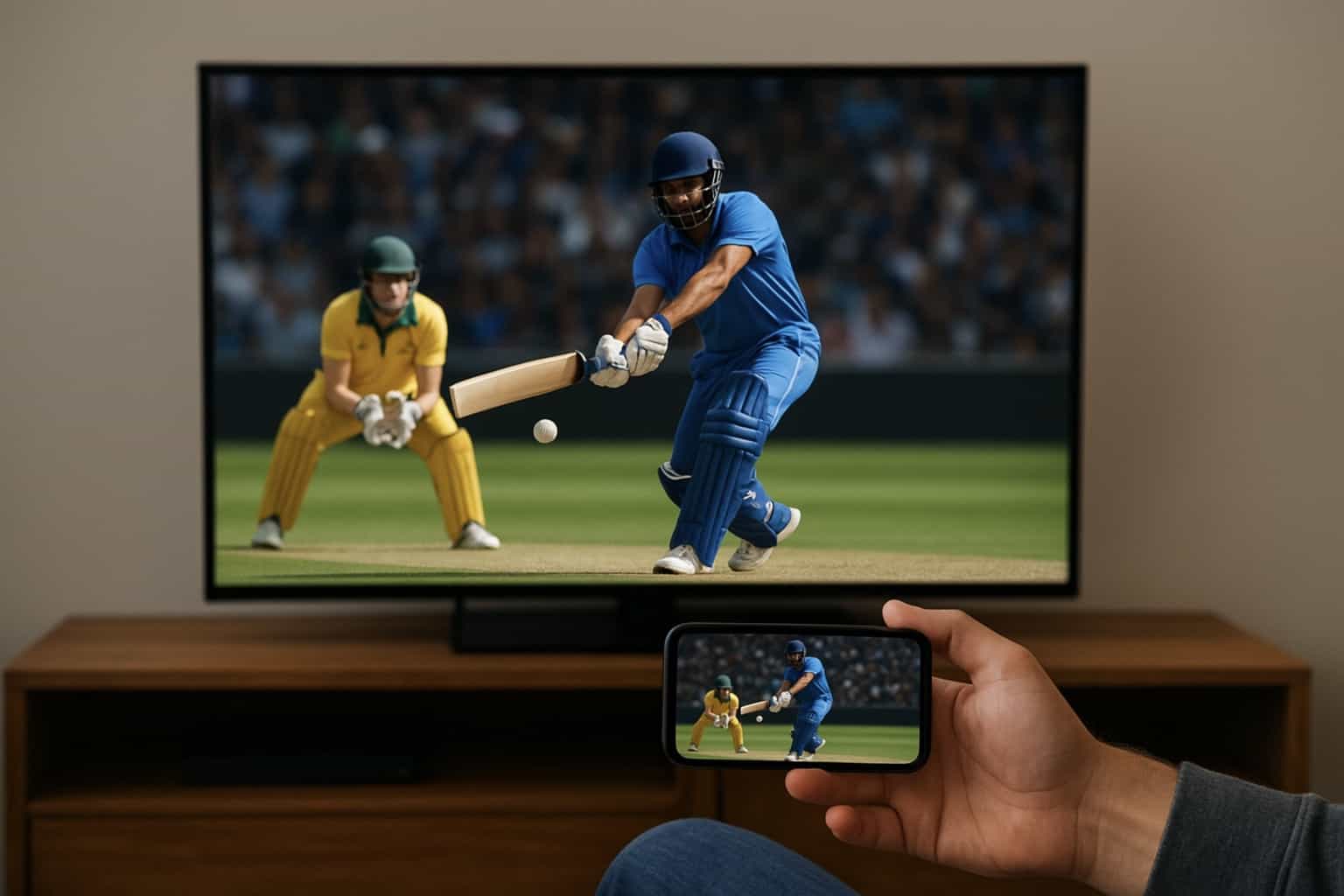How we watch cricket today is completely different from how it used to be for older fans. We no longer have to worry about turning on their TVs on time to not miss out on a match or post-game show. Instead, we’re free to scroll through streaming apps, short clips, and live commentary updates.
So yes, things have changed when it comes to how fans watch cricket. Television is no longer the center of that experience, as online platforms now control how the matches are watched, discussed, and shared.
How the Broadcasting Model Changed
The last few years have rewritten the economics of cricket coverage. The IPL 2023–2027 rights deal changed everything by splitting value almost evenly between TV and digital platforms. Disney Star paid ₹23,575 crore for TV rights, while Viacom18 secured digital rights for ₹23,758 crore.
When JioCinema streamed IPL 2023 for free, the platform hit 32 million concurrent viewers, setting a global record. Data from BARC also confirmed that total IPL viewership jumped by 25% compared to the previous year. So, the ad-supported model worked better than expected.
Younger Fans Are Shaping the Game
The biggest audience shift is generational. According to GroupM’s 2024 Sports Report, 55 percent of cricket viewers in India are under 35 years old. Most of them watch the sport on their phones.
They do not watch matches from start to finish. They look for instant updates, highlight reels, and match summaries under two minutes. On YouTube, creators such as Aakash Chopra and Sports Yaari attract viewership that often rivals TV panel shows.
As sports marketing analyst Santosh told ETBrandEquity, “The screen size doesn’t matter anymore. The format does.” Broadcasters have started to copy what fans are already watching. Many now edit highlights into short explainers and push them across Instagram and YouTube minutes after key moments happen.
More Features Are Added to Improve the Viewing Experience
Streaming platforms are adding interactive features to live viewing, like real-time statistics, prediction charts, and win probabilities. This way, fans can now check scores and other relevant statistics while watching.
With all that, many fans search for free cricket betting tips online not for gambling, but to read expert predictions, compare fantasy stats, and understand data-driven forecasts. The good thing is that many platforms are already getting really good at this, especially when it comes to accuracy.
Short-Form Content Is the New Commentary
Traditional commentary boxes are no longer where most fans hear their favorite voices. Short-form videos, creator clips, and podcasts now do the job.
Aakash Chopra’s YouTube channel has over 4.4 million subscribers and gets millions of views for his analysis videos. Former players like Harsha Bhogle and Irfan Pathan also stream on Instagram Live during games, turning commentary into direct fan interaction.
Anil Jayaraj, CEO of Viacom18, said in an interview with IndianTelevision.com, “Our competition isn’t another broadcaster anymore. It’s every screen that distracts a cricket fan.”
The Bridge, Khel Now, and Cricket Addictor have also built loyal audiences by creating short multilingual explainers and instant match breakdowns that connect directly with regional fans.
Regional Languages Are Powering Growth
One of the most important trends in broadcasting today is localization. Viacom18 now streams IPL matches in 12 languages, while Disney+ Hotstar expanded to include multiple domestic language feeds.
Exchange4Media reported that Tamil and Telugu streams grew by 32 percent in 2024. According to Nielsen, 68% of online cricket viewers now come from non-metro cities.
Regional creators and micro-influencers may be driving this, since traditional broadcasters usually ignore what could help them reach a wider audience outside the metro.
It makes sense because adding local commentary, humor, and cultural references makes matches feel more personal. So, this is where the next big wave of growth is happening.
New Ways to Earn from Fans
Money is moving in new directions. Brands no longer focus only on TV slots. They pay for engagement time across social and streaming channels.
GroupM’s Live Sports Advertising Index 2024 found that engagement-based ad pricing grew by 27 percent in one year. JioCinema added interactive ad formats during matches where fans could click or tap for instant product links.
Sponsorships have changed, too. Brands like Dream11, Cred, and BharatPe are co-producing short digital recap shows with creators instead of buying ad time. Broadcasters make more revenue by spreading coverage across live streams, highlight clips, and creator collaborations.
Traditional Broadcasters Are Catching Up
Television still plays a role, but it is no longer the default. BARC data shows that pay-TV households in India dropped from 127 million in 2021 to 118 million in 2024.
Advertisers are moving faster than networks. Even brands that once reserved budgets for primetime slots now split them between OTT platforms and short-form content.
The FICCI-EY Media Report 2024 summed it up: “Broadcasters must evolve into content creators, not just content owners.”
This is already happening. Disney Star and Viacom18 now push highlight videos and player stories straight to YouTube and Instagram to reach fans who no longer tune in to cable.
What Lies Ahead
The next phase of cricket broadcasting will be a hybrid of live streaming, AI commentary, and short video. Expect broadcasters to test augmented reality overlays and interactive fan polls that run alongside matches.
For the next generation of cricket fans, the broadcast is no longer just something to watch. It is something to join.
The battle is no longer between TV channels. It is between formats. Whoever adapts faster to how fans scroll, share, and react will decide the future of cricket broadcasting.

Editor-in-Chief | Seat42F, a leading source of entertainment news, information, television and movie resources.






